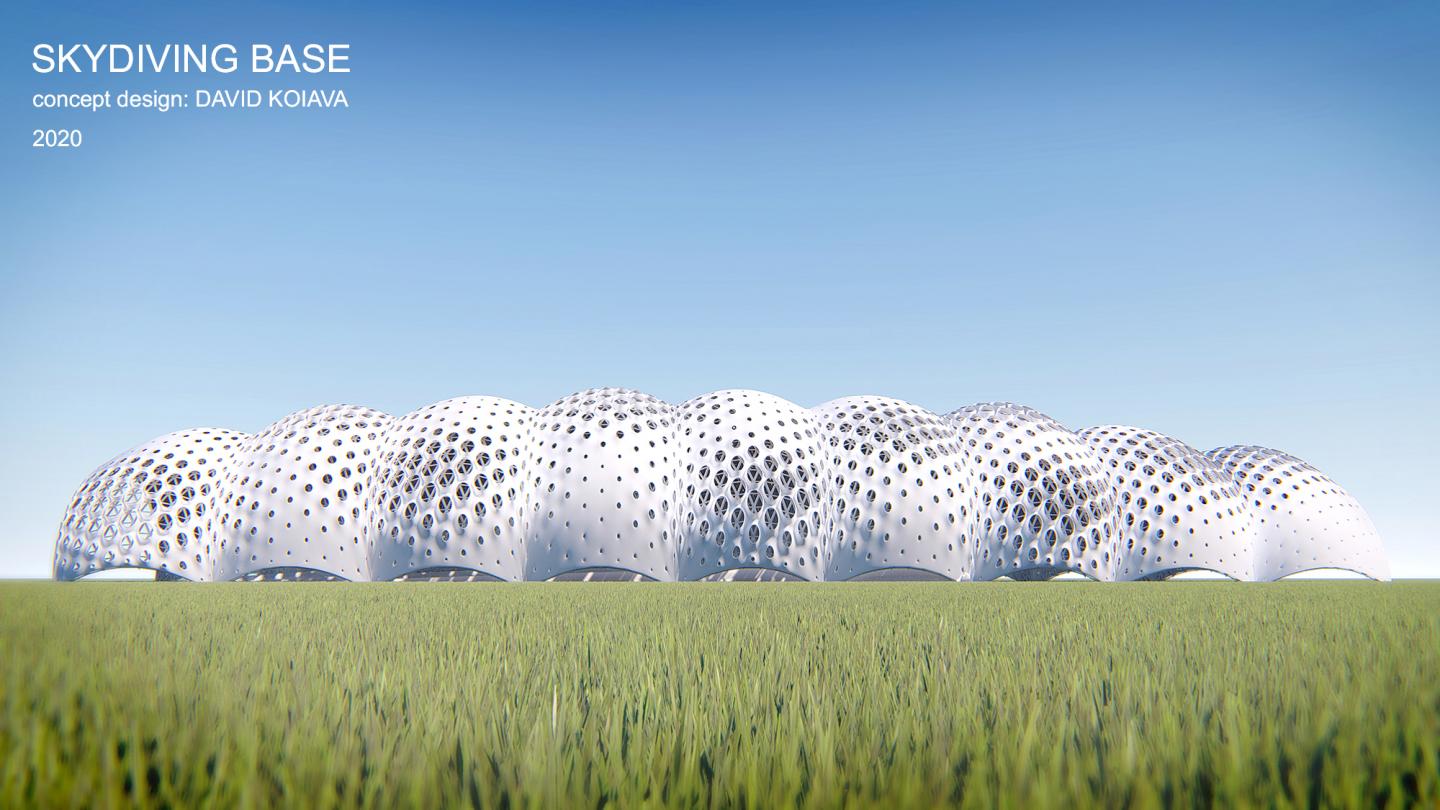Architecture Design Concept of SKYDIVING BASE designed by David Koiava is presenting the module of tent structural module for Skydiving Clubs and related sport purpose.
Architecture of module with Parametric shapes and formation is making project modern and more relevant technical innovations in constructions.
A BIT OF PARACHUTING HISTORY
Our story begins in the early 20th century, in a time where parachutes were (with the exception of some brave Chinese daredevils!) pretty much only used by the military. Soldiers used parachutes to get into difficult to reach places, carrying some heavy gear. It's about as far from today's sport parachuting as you can get!
Back in those days, parachuting had a clear purpose, but it wasn't there for fun. It was used to get stuff done.
Early parachutists jumped old school 'round' parachutes. These were very difficult to control and the parachutist would basically be a passenger, landing wherever the parachute ended up. They often used what's called 'static line', which is where the parachute is automatically opened as the jumper leaves the airplane.
JUMPING INTO FREEFALL
Freefall is exactly what it says - it's falling free through the air, without any constraints or barriers. It is - we think - the most exciting thing a person can do!
There are no words to describe the moment when you jump from an airplane for the first time and you fall through the air at 120mph. It's breathtaking, exhilarating, exciting... it's unlike anything you've ever experienced.
It's what makes skydiving different to parachuting. Skydiving begins with that leap out of the airplane and into the freedom of the sky. Depending on what we're doing, skydivers fall for between 30 and 90 seconds, flying their bodies to perform tricks or create formations on the way down.
2020
0000
SKYDIVING BASE modul is the compact structure which is convertable and easy to transport to another location.
DAVID KOIAVA architecture & design




